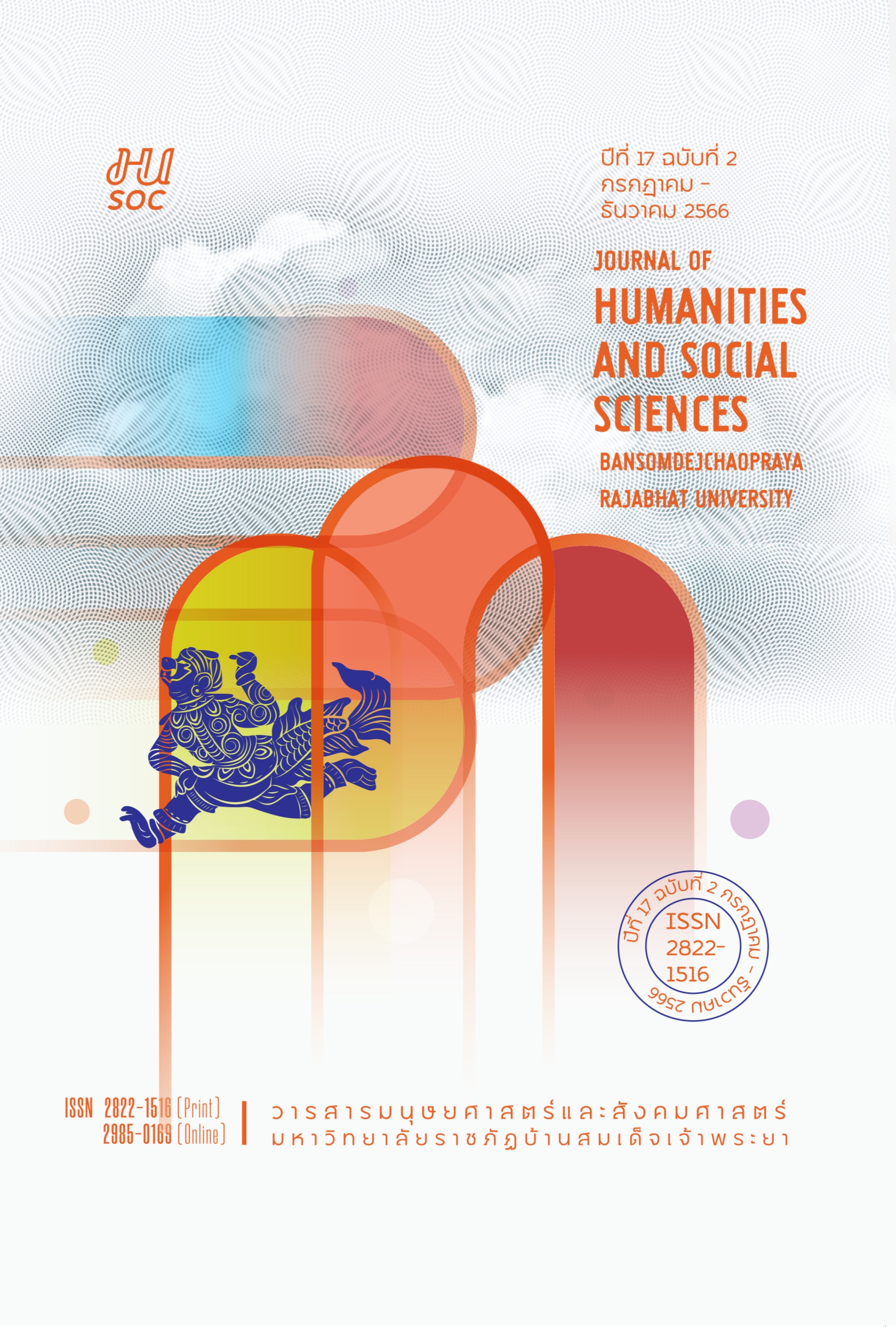The Pattern and Content of Ramayana: Jong Tanon, The Writing by King RamathibodiI Sisin Maha Vajlravudh Phra Mongkut Klao Chao Yu Hua
Keywords:
Ramayana Jong Tanon, Pattern and Content, The Writing by King, King Mongkut Klao Chao Yu HuaAbstract
This research article aims to study the pattern and content of Ramayana: Jong Tanon, the writing by King Ramathibodi I Sisin Maha Vajlravudh Phra Mongkut Klao Chao Yu Hua. Through the analysis of Ramayana: Jong Tanon, various issues reflected through royal writings are examined using qualitative research methodology with document research and content analysis of royal writings. The study found that His Royal Highness Princess Maha Chakri Sirindhorn incorporated the Ramayana story, Jong Thanon, as a song and narrative for Khon performances. Most of them consist of songs and dubs that are polite poems, except for the narrative chapter of Yani 11, which shows the grand scene of Rama’s army procession and the lengthy dialogue in the Jong Tanon scene of Nol. As for the story, it differs from the original Ramayana script during the reign of Rama I and II because it retains the original layout from Valmiki Rishi’s Ramayana texts. Additionally, it is hidden by royal ploys or royal initiatives that are contemporary concepts applicable today, both in terms of nature under scientific rules and in solving problems through peaceful means. Furthermore, it reflects the humanity of the monarch assuming the role of gods in the democratic system, showcasing His Majesty’s genius in royal writings in the blessing of King Rama VI. Moreover, His Majesty’s knowledge and understanding of the globalization of politics and government in a truly democratic system are conveyed through royal writings, which are suitable for creating Khon performances in the present era. This research aims to conserve traces of Khon performances based on the royal writings of King Rama VI and provide them with an opportunity to be revitalized with modern technology and special techniques.
References
โครงการสารานุกรมไทยสำหรับเยาวชน โดยพระราชประสงค์ในพระบาทสมเด็จพระเจ้าอยู่หัว. (2550). สารานุกรมไทยสำหรับเยาวชนโดยพระราชประสงค์ในพระบาทสมเด็จพระเจ้าอยู่หัว, เล่ม 13. สำนักงานโครงการสารานุกรมไทย.
ธวัชชัย ดุสิตกุล. (2547). บทโขนละครพระราชนิพนธ์ในพระบาทสมเด็จพระมงกุฎเกล้าเจ้าอยู่หัว. [วิทยานิพนธ์อักษรศาสตรมหาบัณฑิต, จุฬาลงกรณ์มหาวิทยาลัย].
ปิ่น มาลากุล, หม่อมหลวง. (2552). งานละครของพระบาทสมเด็จพระรามาธิบดีศรีสินทรมหาวชิราวุธ พระมงกุฎเกล้าเจ้าแผ่นดินสยาม. โรงพิมพ์แห่งจุฬาลงกรณ์มหาวิทยาลัย.
มงกุฎเกล้าเจ้าอยู่หัว, พระบาทสมเด็จพระ. (2464). รามเกียรติ์: บทร้องและบทพากย์ พระราชนิพนธ์ในพระบาทสมเด็จพระรามาธิบดีศรีสินทรมหาวชิราวุธ พระมงกุฎเกล้าเจ้าอยู่หัว. ม.ป.พ..
สุรพล วิรุฬห์รักษ์. (2547). หลักการแสดงนาฏยศิลป์ปริทรรศน์. สำนักพิมพ์แห่งจุฬาลงกรณ์มหาวิทยาลัย.
เสาวณิต วิงวอน. (2554). วรรณคดีการแสดง. ภาควิชาวรรณคดี คณะมนุษยศาสตร์มหาวิทยาลัยเกษตรศาสตร์.
Downloads
Published
How to Cite
Issue
Section
License
Copyright (c) 2023 Faculty of Humanities and Social Sciences Bansomdejchaopraya Rajabhat University

This work is licensed under a Creative Commons Attribution-NonCommercial-NoDerivatives 4.0 International License.



